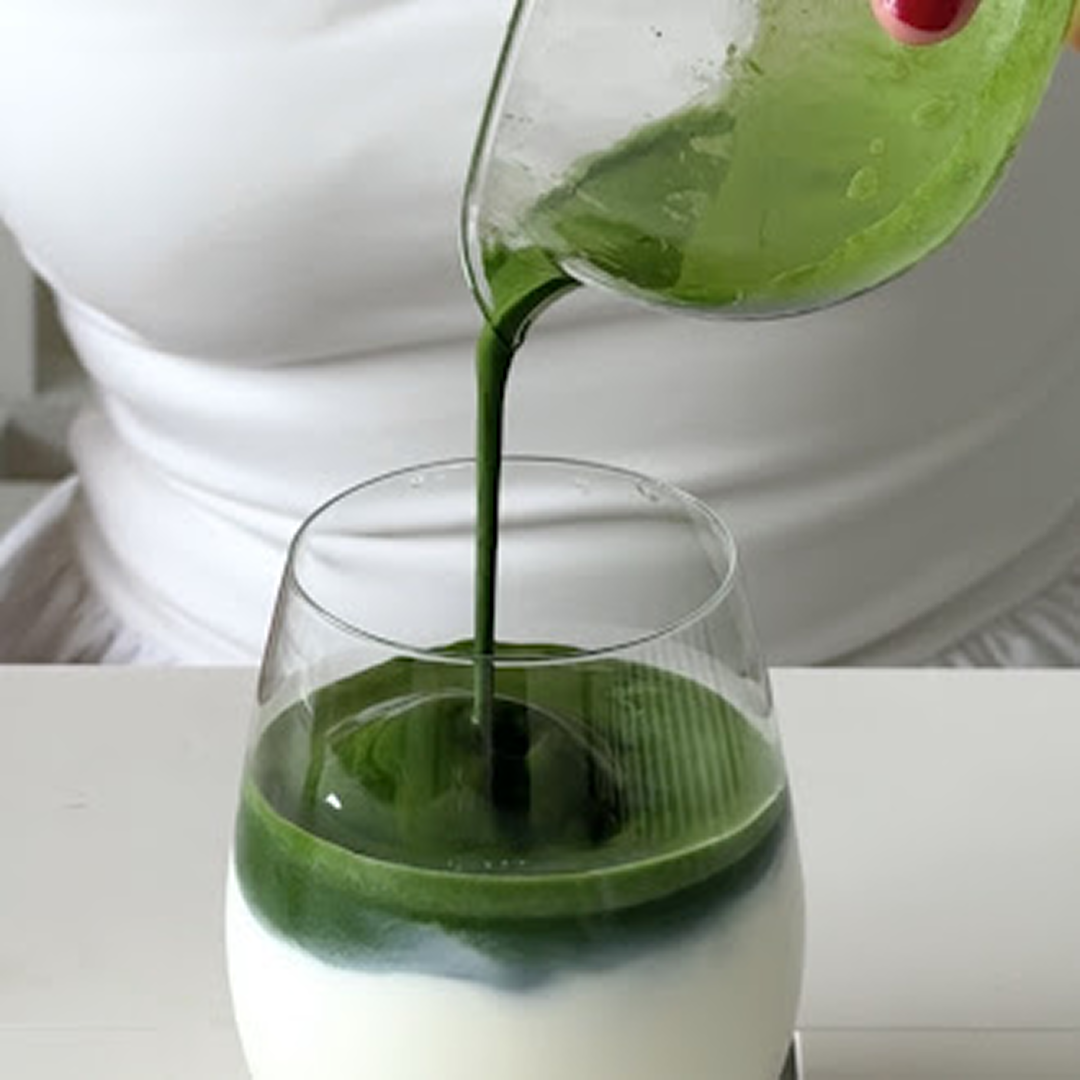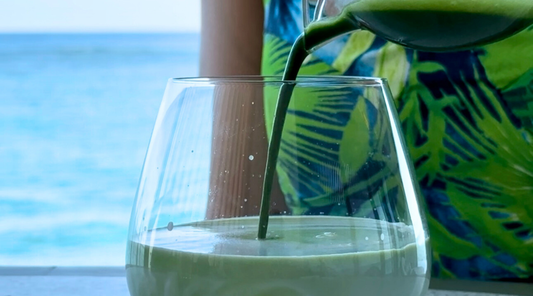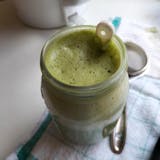
How to Store Matcha to Keep It Fresh, Vibrant & Green
Share
If you've invested in high-quality matcha, you want to make sure it stays fresh, vibrant, and full of flavour for as long as possible. Proper storage is key to preserving its unique qualities, but it's not as complicated as you might think.
Let’s dive into the best practices for storing matcha to ensure every scoop delivers that perfect, fresh taste.
How to Store Matcha for Maximum Freshness

Matcha is delicate. It's made from finely ground green tea leaves, and its vibrant colour and rich flavour can easily degrade if not stored correctly. Exposure to air, light, heat, and moisture can all cause matcha to lose its lustre, turning a bright green powder into something dull and flavourless.
But don't worry – with just a few simple steps, you can keep your matcha fresh and delicious.
1. Keep It in an Airtight Container
Why it matters: Air is the number one enemy of matcha. When matcha is exposed to air, it begins to oxidise, which can cause it to lose its vibrant green colour and fresh taste. The more air it’s exposed to, the faster this happens.
Exposure to oxygen can damage the catechins and vitamins in matcha, reducing its health benefits. When matcha is exposed to air, its nutritional value diminishes.
What to do: Store your matcha in a container that seals tightly. Traditional matcha canisters work great, but any airtight container will do. The goal is to minimise air exposure as much as possible. Each time you open the container, some air gets in, so try to open it only when you need to.
Looking for the perfect storage? Explore our airtight Japanese matcha tins and matcha sifters → Shop Now.
2. Store Matcha in a Cool, Dark Place
Why it matters: Both heat and light can degrade the quality of your matcha. Heat can cause it to lose its flavour, while light can make it fade and lose its bright green colour.
What to do: Find a spot that’s cool, dark, and away from any heat sources – like a pantry or cupboard. Avoid areas with fluctuating temperatures, like near ovens or windows, as this can also impact the matcha’s quality. Consistent, cool temperatures are ideal for keeping your matcha at its best.
3. Refrigeration (Optional)
Why it matters: If you live in a warm or humid climate, refrigeration can help extend the freshness of your matcha. However, it’s important to do this right to avoid introducing moisture, which can cause clumping or even mould.
What to do: If you choose to refrigerate your matcha, make sure it’s in a completely airtight container to prevent moisture from getting in. Before you open the container, let it reach room temperature to avoid condensation forming inside. Remember, moisture is one of matcha's biggest enemies.
4. Avoid Moisture
Why it matters: Moisture can quickly ruin your matcha by causing it to clump together or even grow mould. Matcha needs to stay dry to maintain its fine texture and fresh flavour.
What to do: Always use dry utensils when scooping out your matcha, and make sure the container is completely dry before sealing it. Store your matcha in a dry environment, away from areas that might be prone to humidity.
5. Use within a Reasonable Time Frame
Why it matters: Matcha is best when it’s fresh. Over time, even with proper storage, it will start to lose its flavour and nutritional benefits.
What to do: Aim to use your matcha within 2 to 3 months of opening it. While it can last up to 6 months if stored properly, it’s at its peak during those first few months. Regularly check your matcha for any changes in colour, aroma, or flavour as signs of its freshness.
6. Check for Quality
Why it matters: Even with the best storage practices, matcha can still degrade over time. It’s important to regularly check your matcha to make sure it’s still good to use.
What to do: Before each use, take a moment to check your matcha. It should have a vibrant green colour and a fresh, grassy aroma. If it smells off, has turned a dull yellow-green, or has developed an unusual texture, it’s time to replace it.
Keep in mind that different grades of matcha – ceremonial, premium, and culinary – might have slightly different shades of green. Compare the colour to how it looked when you first opened it.
Colour is important, but the real test of freshness is in the smell, taste, and overall quality. These are the most important things to check when deciding if your matcha is still good.
Matcha Storage Tips Others Aren’t Telling You

When it comes to storing matcha, there are a few extra details that often go unnoticed but can make a big difference:
1. Original Packaging Matters
Some matcha brands package their products in high-quality, lightproof bags that are designed to protect against air and light. If this is the case with your matcha, it might be best to leave it in its original packaging and place that package inside an airtight container.
2. Freeze with Caution
If you buy matcha in bulk, freezing it can be an option. However, this should only be done if you’re sure the container is completely airtight. Freeze it in small portions so you only thaw what you need, avoiding repeated temperature changes for the entire batch.
3. Watch Out for Oxidation
Matcha can oxidise even before you buy it if it hasn’t been stored properly by the seller. Make sure to buy from reputable sources that care about the freshness of their product.
4. Use Opaque Containers
Always store your matcha in an opaque container that blocks out all light. This will help maintain its colour and flavour for longer periods.
5. High-Quality Ceremonial Matcha Needs Extra Care
Ceremonial grade matcha is more delicate and requires more careful storage than culinary-grade matcha.
For ceremonial matcha, make sure you’re extra vigilant about keeping it airtight and away from light and heat. This grade of matcha deserves the best storage conditions to preserve its subtle flavours and vibrant green colour.
6. Avoid Spoons, Use a Sifter
Scooping matcha with a spoon can introduce moisture and create clumps. A sifter helps break up any existing clumps, ensuring a smoother drink.
Use a fine sifter when preparing your matcha. This will remove any clumps and make it easier to whisk into a smooth, frothy tea.
7. Whisk Your Matcha to Perfection
Proper whisking ensures your matcha has a smooth, frothy texture and helps fully dissolve the powder
Use a traditional bamboo whisk (chasen) for the most authentic experience, or an electric milk frother for convenience. Each tool can help you achieve that perfect, creamy froth.
8. Clumps Aren’t Always Bad
Clumps can sometimes indicate moisture exposure, but they can also be a sign of finely ground, high-quality matcha.
If you find clumps in your matcha, don’t panic! Tiny clumps are usually just particles sticking together due to static electricity, a sign of finely ground, high-quality matcha. However, if the clumps are large or there are too many, it might indicate that moisture has gotten in.
9. Divide and Store to Minimise Air and Moisture Exposure
Every time you open your matcha container, it’s exposed to air and moisture, which can degrade its quality.
Consider dividing your matcha into smaller portions. Keep a smaller container for daily use and leave the rest sealed tightly in the main supply. This way, the bulk of your matcha stays fresher for longer.
10. Buy Smaller Amounts (Use Subscribe & Save Plans)
Purchase matcha in smaller quantities that match your consumption rate. This ensures you’re always enjoying the freshest matcha without worrying too much about storage.
Consider using a subscribe-and-save plan to have fresh matcha delivered based on your preferred time frame, keeping your supply just right.
By following these tips, you can make sure your matcha stays as fresh and flavourful as possible, whether you’re a daily drinker or a weekend whisker. Proper storage might take a little extra effort, but it’s well worth it to enjoy the full, vibrant flavour of high-quality matcha every time you brew a cup.
Written by Maison Koko’s Matcha Specialist Team
With years of experience sourcing single-cultivar ceremonial matcha from Uji and Yame, we craft our guides with care, transparency, and deep tradition.









